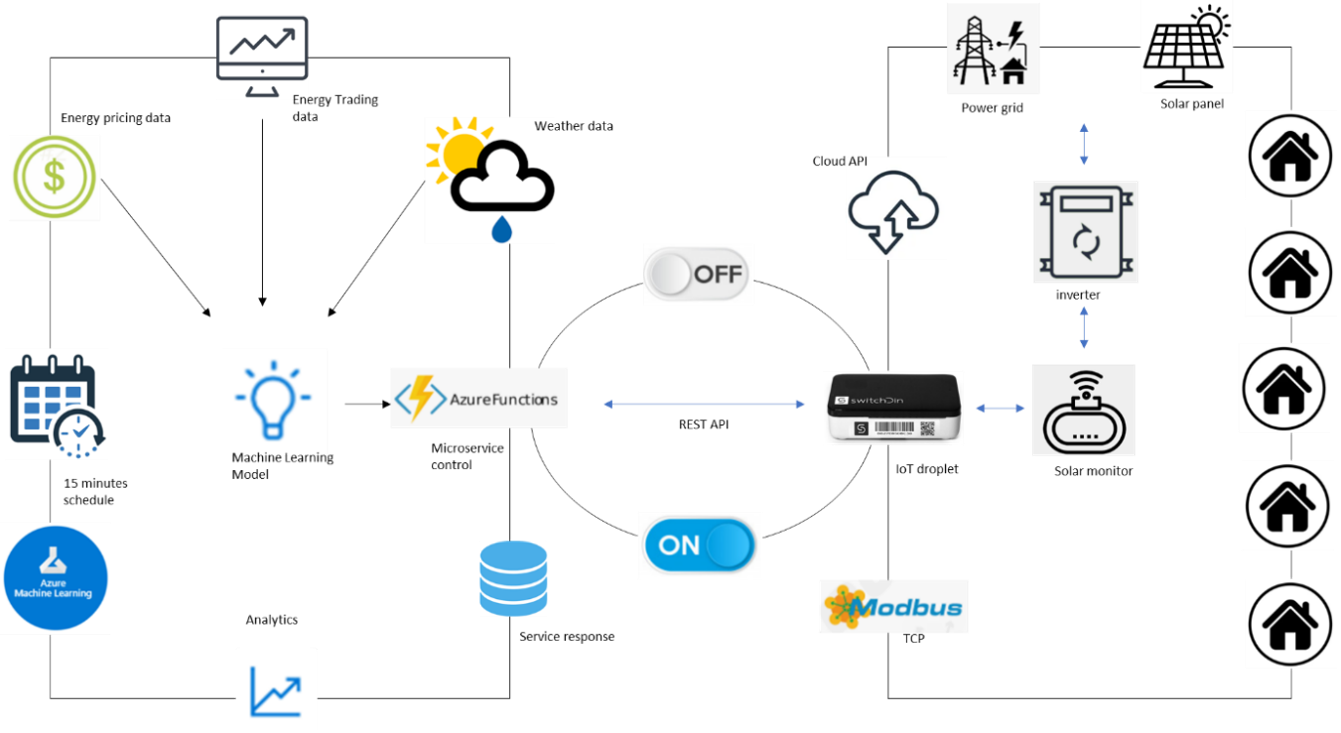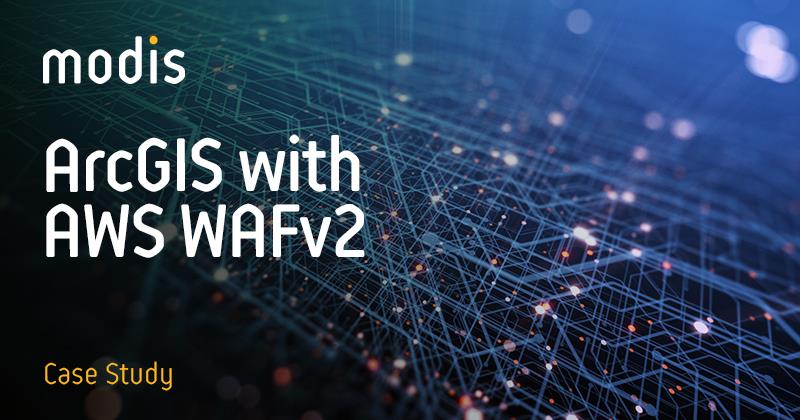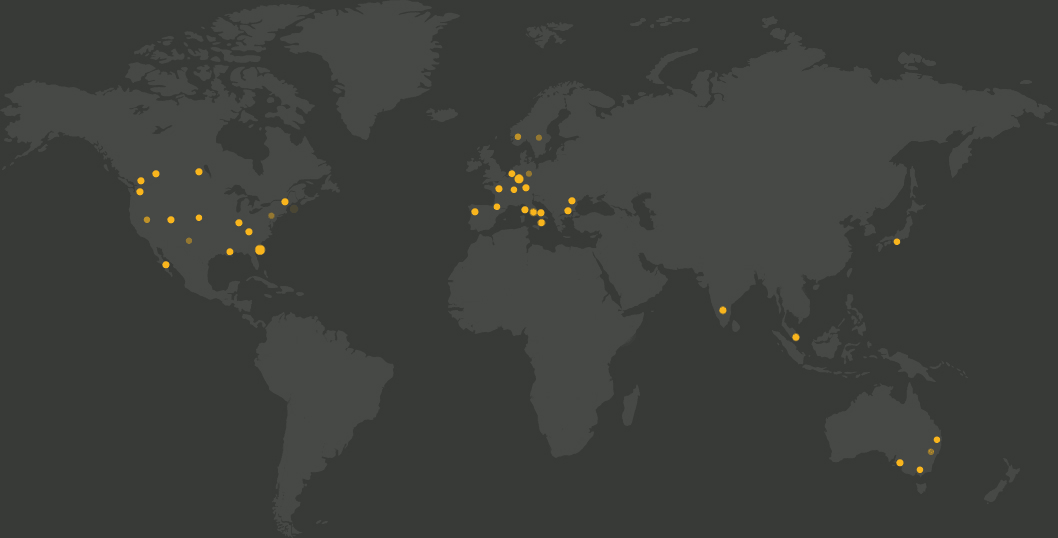Content management error: Header Banners should not be placed in the Navigation placeholder!
Pioneering energy transformation in Australia
Parijat Roychowdhury Posted 10 September 2021Content management error: Generic Content Banners should not be placed in the Navigation placeholder!
Summary
Distributed Energy Resources (DER) Management with Machine Learning and IoT
This solution is a pilot for a DER flexibility product to reduce exposure of energy retailers to negative pricing. Negative pricing has become a common phenomenon on the balancing market around the world. This causes energy companies to lose revenue as they pay a higher price to purchase energy than the price they sell it for. This solution uses advanced machine learning to predict negative pricing events for customers' solar power generation. Based on the ML (Machine Learning) predicted threshold, the application automatically applies intelligent DER control to switch off the customer’s solar generation unit. On completion of the Negative Pricing window the application turns on the solar generation unit back. During the Negative pricing window the export to the grid for solar power generation becomes zero. This reduces the energy retailers buy back cost for the engaged customers by disconnecting power supply back to the electricity grid. The customers are provided upfront credit as well as reimbursements for energy generation loss during the negative pricing window.
The Challenges:
Negative prices: how they occur and what they mean.
Prices in the wholesale electricity market are determined by supply and demand. Energy generators offer to supply the market with specific amounts of electricity at certain prices. The Australian Energy Market Operator stacks the offers for each five-minute block of time in ascending price order and then progressively schedules them into production to meet demand, starting with the least-cost bid.
Negative prices occur when supply offered at negative prices is greater than demand. These events generally occur in the middle of the day when generators (i.e., rooftop solar, large-scale solar, wind and coal-fired generators) are competing to dispatch their energy.
Effect of renewable in negative pricing.
An increased number of renewables generators (i.e., rooftop solar, large-scale solar, wind farms etc.) have made negative prices increasingly common. The rising share of renewable power has made power prices much more volatile and negative prices have become a common phenomenon. The number of hours with negative power prices have increased steadily in the last few years.
The Objectives:
The increase in energy negative pricing is threatening the profitability of energy companies. One of the most effective ways to combat this is to switch off power generation sources during the negative pricing window to curb losses.
Coal-fired generators, however, incur significant costs stopping and starting and require many hours to restart. This means they continue generating throughout negative pricing periods as it is more cost-efficient to incur the costs of negative pricing than shutting down and restarting again. This ensures that they are available to meet peak demand in the late afternoon and evening.
However, intermittent, and fast response power generation sources such as rooftop solar and large-scale commercial solar systems can be managed relatively easily and remotely using an intelligent Distributed Energy Resources Management system.
The Strategy:
Power market players have learnt to deal with the negative pricing scenario. They are developing and deploying DER systems which can predict the negative pricing window and operate on fast response energy generation sources. Intermittent and fast response energy sources (such as solar, wind, peaking generators) can stop and start in relatively short spaces of time to avoid negative price periods.
This energy client engaged with commercial solar customers to get them onboard with this program by offering benefits which takes care of both customers and the client’s financial goals. On agreement, the customer is setup within the Virtual Power Plant via an IoT device.
Content management error: Generic Content Banners should not be placed in the Navigation placeholder!
The Solution
E-Flex used advanced machine learning to predict negative pricing event for customers’ solar power generation. The machine learning model used energy trading data, historical pricing data, weather information to predict future negative pricing events for customers suburb or location.
The customer’s solar generation unit is connected to the VPP using a third party IoT device, called droplet. The droplet works as a scheduler & controller for customer’s solar device. The IoT droplets are issues commands to operate by the machine learning program deployed in the Cloud.
Based on the predicted threshold it automatically applies DER control to switch off export from customer’s solar generation unit remotely. On completion of the negative pricing window the system turns back on the solar generation unit. During this tenure, the export to the grid for solar generation becomes zero. This reduces the clients buy-back cost for the engaged customers. The customers are provided upfront credit as well as reimbursements for energy and cost.

Content management error: Generic Content Banners should not be placed in the Navigation placeholder!
Results
DER flexibility pilot is our client’s step towards building the utilities of the future. They save thousands of dollars in overspending, and it helps with grid optimization by balancing supply and demand and ensuring adequate distribution capacity. This will set a path for future distributed energy management services and products for both commercial and retail consumers.
About Modis
At Modis we connect people, technology and businesses to the opportunities they need to thrive in a rapidly advancing world. With 1,300+ technology professionals across six locations (Sydney, Melbourne, Brisbane, Adelaide, Canberra and Perth), we work with our clients to deliver solutions and talent to transform technology portfolios, streamline business functions, drive innovation or enhance organisational capability. www.modis.com.au
Content management error: Generic Content Banners should not be placed in the Navigation placeholder!
Content management error: Generic Content Banners should not be placed in the Navigation placeholder!

Modis developed and continues to manage a fleet of ESRI ArcGIS geospatial servers for a commercial operator in the lands industry. The ArcGIS applicat...
An electrical energy retailer has started a migration into AWS for its VM based business applications, with Modis helping prepare solid, evidence-base...
Modis implemented a fully managed cloud firewall to either restrict or inspect and permit data egressing from a customer’s Cloud network as a central ...
A state government customer has a number of microservices and applications that are logging to individual Cloud Watch log streams and investigating in...
Content management error: Generic Content Banners should not be placed in the Navigation placeholder!
Start a Conversation
Find out how Modis can provide innovative digital solutions that solve the challenges you faceGet in touch with one of our solutions experts todayContact usWe are global leaders
